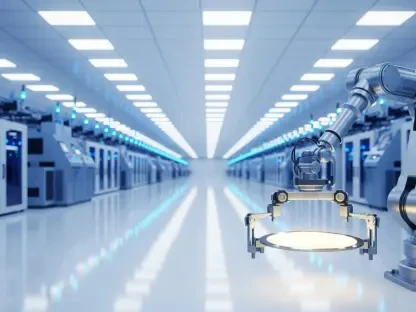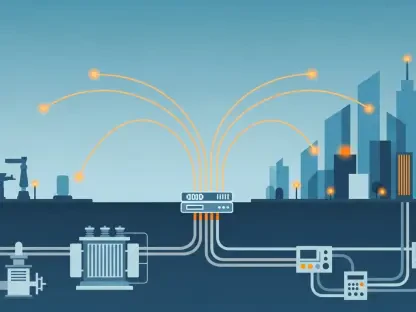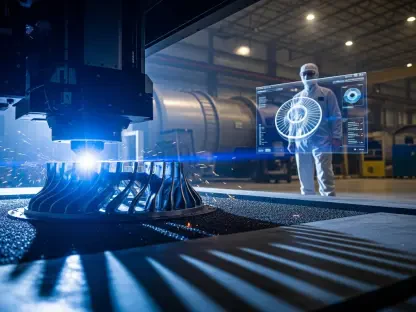In the ever-evolving industrial landscape, the integration of artificial intelligence (AI) has significantly transformed operations on the modern plant floor. This transformation is not simply about automating existing tasks but rather enhancing and optimizing processes with intelligent insights. AI’s ability to learn from data and adapt to changing conditions provides manufacturing floors with unprecedented levels of efficiency, uptime, and decision-making prowess. Utilizing AI, businesses are now able to foresee potential disruptions, optimize current procedures, and respond proactively to market demands. This shift empowers manufacturers to remain competitive in an increasingly demanding environment. Through clever deployment of AI technologies, including machine learning and data-driven analytics, the plant floor is evolving into a highly adaptable and efficient operating environment. These advancements offer substantial improvements in performance, cost savings, and operational reliability, marking a leap towards a more innovative industrial era.
Predictive and Prescriptive Maintenance
Incorporating AI into equipment maintenance is one of the most promising applications defining modern manufacturing processes. Harnessing machine learning models and real-time sensor data, predictive maintenance systems can foresee equipment failure patterns before they disrupt production. This approach surpasses traditional maintenance methods by not just alerting teams about potential issues but also prescribing specific corrective measures based on similar past events. This prescriptive maintenance effectively guides teams on the most effective interventions, maximizing asset performance and minimizing downtime. These enhanced maintenance strategies lead to remarkable cost savings and extend equipment lifespan, underscoring the cumulative benefits of AI integration on the plant floor. The ability to predict failures and preemptively address them leads to more sustainable, efficient operations, fundamentally transforming how industries approach asset management. By reducing unexpected shutdowns, manufacturers can maintain seamless production schedules and ensure product quality, enhancing overall business resilience in competitive markets.
Effective AI-driven maintenance strategies also entail deeper analyses which extend beyond equipment performance. By evaluating vast historical and current data, these systems can provide a comprehensive view of operations, facilitating more informed strategic decisions. This results in optimized maintenance planning, reduced incidence of human errors, and improved safety standards. Furthermore, AI’s adaptability enables it to evolve continuously, making it a resilient tool in addressing some of the most intricate industrial challenges. Manufacturers who leverage these innovations not only enhance their operational efficiency but also gain a strong foothold in a rapidly transforming digital industrial landscape. By adopting a proactive approach to maintenance, companies can transition from reactive repair models to forward-thinking operational strategies, reinforcing their competitive edge and fostering long-term sustainability.
Adaptable Machine Vision
Machine vision, powered by artificial intelligence, is revolutionizing quality assurance and process control on the plant floor. Unlike traditional rule-based systems that often face limitations with adaptability and manual programming, AI-driven vision systems excel by learning from data and dynamically adjusting to evolving manufacturing conditions. These intelligent systems are equipped to detect defects, monitor product consistency, and verify assembly steps with heightened accuracy and flexibility, ensuring superior quality control without extensive human intervention. The adaptability of AI-based vision applications allows for seamless integration into existing infrastructures, minimizing the need for costly overhauls and extensive operational disruptions. By accommodating a continually changing production environment, manufacturers can achieve higher cost-effectiveness and scalability, thus enhancing their competitive advantage. The potency of these systems lies in their ability to continually learn and adapt, reinforcing quality precision and operational resilience while reducing production costs.
Moreover, these advancements position manufacturers to swiftly respond to market fluctuations and customer demands with minimal downtime. AI-driven machine vision systems are designed to handle complex manufacturing tasks and offer a level of detail and precision that meet the rigorous standards of modern production. By minimizing manual interference, manufacturers can attain unprecedented levels of efficiency and accuracy, directly impacting their economic performance and market positioning. Enhanced flexibility and quick adaptability also mean that manufacturers can immediately respond to defects or variances in production, thereby maximizing uptime and minimizing waste. By leveraging advanced machine vision technology, industries are paving the way for smarter, more streamlined operations that align with the demands of today’s dynamic business landscape.
Strategic AI Planning and Deployment
The successful integration of AI on the manufacturing floor begins long before technology selection. Thorough planning, strategic collaboration, and clear objectives lay the foundation for effective implementation. Establishing a cross-functional team that represents all stakeholders, including operations, IT, engineering, maintenance, and frontline personnel, is critical for aligning technical goals with practical realities. This inclusive approach ensures a comprehensive understanding, allowing potential challenges to be anticipated and mitigated early in the project lifecycle. Building internal support and fostering continuous feedback loops help with risk management, encouraging broader acceptance of AI initiatives. Auditing current systems and workflows is imperative to assess readiness and identify inefficiencies. This step enables manufacturers to recognize opportunities for AI augmentation and assess processes that can unlock significant business value.
Identifying high-value analytics opportunities speeds AI deployment within plant operations. Manufacturers should focus on areas where predictive insights can enhance decision-making or replace laborious manual tasks. Engaging teams at all levels aids in this discovery phase, as ground-level insights often reveal critical applications that upper management might overlook. By selecting a strategic starting point for implementation, such as a specific production line or workflow, companies can manage phased AI trials while slowly integrating into the broader operational strategy. Testing AI integration on a manageable scale establishes proof-of-concept, encourages buy-in, and sets the stage for broader implementation. Structured roadmaps with clearly defined milestones, key performance indicators, and comprehensive communication frameworks ensure accountability and stakeholder alignment, leading to long-term project success.
Sustaining Competitive Advantages
In today’s rapidly changing industrial world, the integration of artificial intelligence (AI) is revolutionizing operations on the modern plant floor. This transformation goes beyond just automating traditional tasks; it involves improving and fine-tuning operations with intelligent insights. AI’s capacity to learn from data and adapt to shifting conditions allows manufacturing floors to achieve unprecedented levels of efficiency, uptime, and decision-making capability. By leveraging AI, companies can foresee potential disruptions, refine existing procedures, and react proactively to market shifts. This evolution helps manufacturers stay competitive in an increasingly challenging landscape. Through strategic deployment of AI technologies, such as machine learning and data-driven analytics, the plant floor is becoming a highly flexible and efficient operational setting. These advancements pave the way for significant improvements in performance, cost savings, and operational reliability, ushering in a new wave of innovation in the industrial sector.









